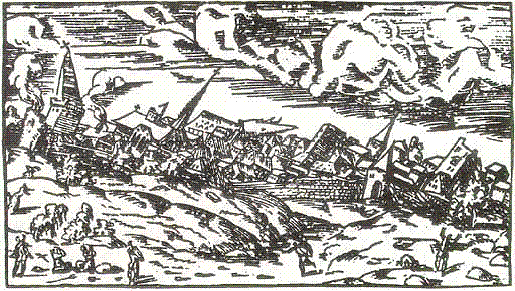 |
| Memorial to Battle of Näfels |
The opponents were Glarus (one of the Cantons of Switzerland) and the Old Swiss Confederation against the Hapsburgs of Austria. In 1386, the Old Swiss Confederation besieged the Hapsburg village of Weesen. In 1387, Glarus rose up against its Austrian occupiers and declared itself free of Hapsburg control.
In retaliation, the Austrian army, in February 1388, drove the Swiss out of Weesen. In April, the Austrian army decided to attack Glarus; 5000 men marched toward Näfels, a municipality in Glarus; on the way, they were joined by a column of 1500.
Näfels had for its defense about 400 men. Outnumbered 16 to 1, after a brief resistance the men of Näfels scattered, disappearing off the fortifications and into the snow- and fog-filled night. The Austrians, emboldened, broke ranks and began to pillage the outlying farms.
But the Glarners had counted on that. They began appearing out of the fog and snow, picking off the Austrian soldiers in ones and twos. A quick attempt to pull together the ranks resulted in a brief battle, but the now disoriented and slightly demoralized Austrians decided to retreat, despite their overwhelming numbers. In crossing the Linth River, a collapsing bridge dropped many Austrians into the river to drown. Ultimate losses for the Austrians are difficult to estimate, but some say up to one-third of the army was killed over the course of a couple of days. A monument exists to honor the (only) 54 Swiss Confederation and Glarner men who were killed.


